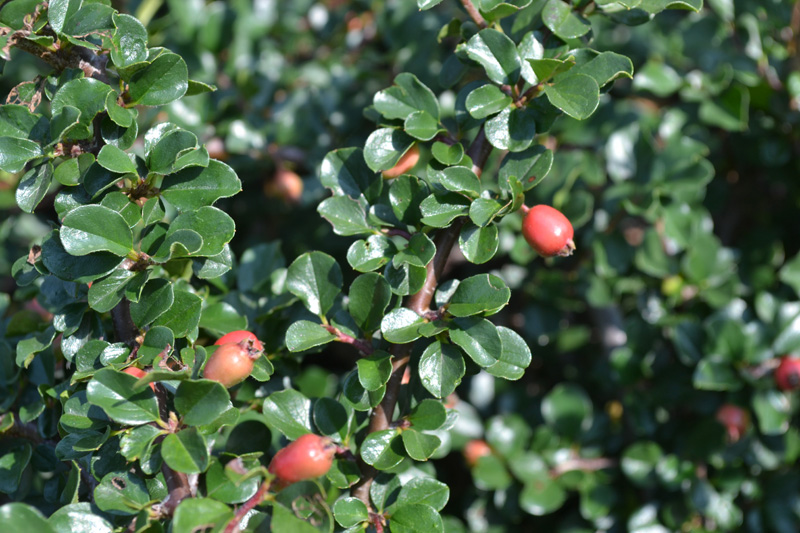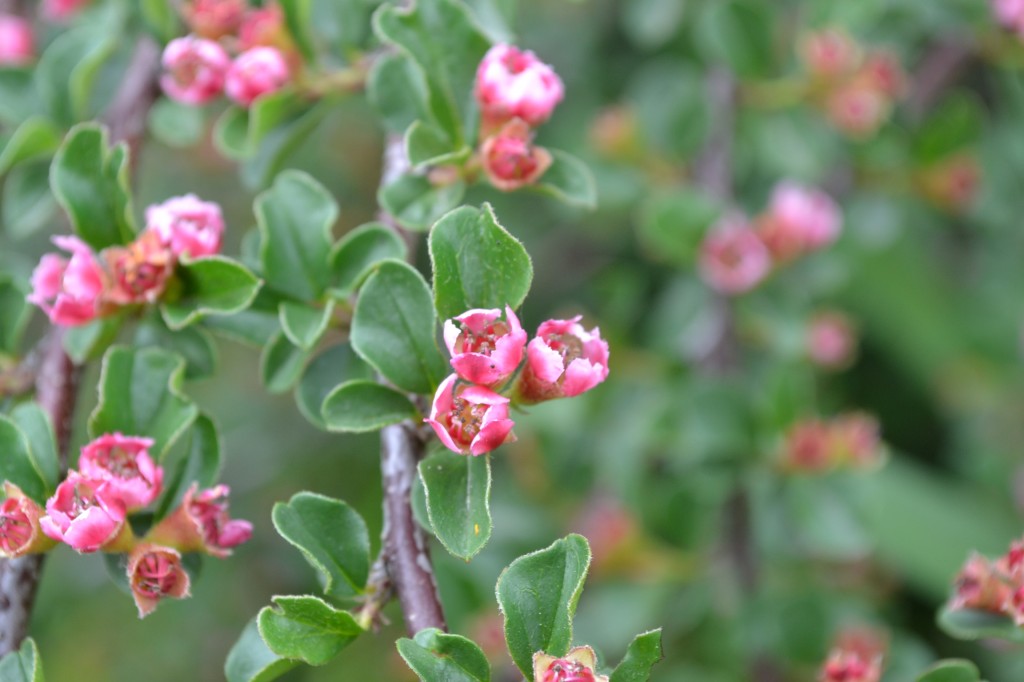Cranberry Cotoneaster is a deciduous evergreen shrub. In the spring the shrub produces small, bright pink flowers. The flowers later produce small red fruit. This evergreen produces bright red berries from the flowers. Though the berries are not edible, they provide a colorful addition to the plant. The foliage of this shrub is small and glossy. The leaves of this shrub are about the size of a fingernail. The leaf structure is similar to that of the boxwood.
This shrub does not maintain a shapely form like the boxwood. The plant tends to creep and spread. Cranberry Cotoneaster is a low-lying spreading shrub. The branches of this plant spread out, creating an attractive low-lying hedge. Brown branches contrast the green foliage and red fruit nicely. The plant reaches up to six feet wide when it is fully mature. Cotoneaster can be planted in a variety of applications. Often this plant is used in an application where it is allowed to spread. Considering that this plant is a broadleaf evergreen, it never sheds its foliage. During winter when snow is present, this shrub stands out nicely.
Pruning can be done to control the growth habit of the shrub. As always, it is essential to remove dead or damaged foliage.
Cranberry Cotoneaster
Cotoneaster Apiculatus
Plant Details
Flower Color- Pink
Foliage Color- Dark Green
Zone- 4-7
Height- 2′-3′
Spread- 3′-6′
Light- Sun
Details- This shrub has small glossy foliage contrasting with bright red berries.
Pruning- The ideal time to prune Cranberry Cotoneaster is in the winter time. Summer pruning can be done, but it should be kept to a minimum. Pruning this plant varies depending on the expectations of the owner. This plant is not generally pruned tight. Pruning should mainly consist of training the plant and removing straggly branches. If you are trying to form a hedge, then you can prune the shrub more aggressively.
Other Cotoneaster plant options.
- Canadian Creeper TM Cotoneaster
- Coral Beauty Cotoneaster
- Eichholz Cotoneaster
- Peking Cotoneaster


